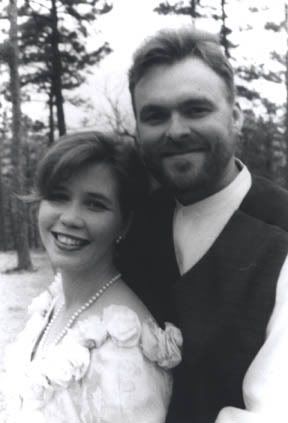There are always a few things that can be done outdoors to prepare for the upcoming garden season, even in January. The things I am working on this month are often considered best done in the fall or spring, but in my climate (zone 6b) it’s neither too late nor too early.
Poppy seeds need to be exposed to the elements. A good way to do this would be to follow the guidelines at http://www.wintersown.org/
I prefer to sow poppies directly where I want them to grow, mostly because it saves me the work of transplanting. The danger in doing this is that heavy rains might wash the seeds away or cover them in mud. (Using wintersown practices can circumvent this problem.) I level the area ahead of time, touching it up twice or thrice after rains and freezes before sowing. If I were sowing a large area this would be too much work, but I’m not. Poppy seeds needn’t be buried since they are so small, only scattered thinly over a prepared area. They will come up at the right time.
 I’m planting poppies in what will be this year’s squash beds. I noticed a couple of years ago that squash bugs were on every squash plant except for the one with poppies nearby. Unfortunately the poppies die off in the heat before the squash is mature. This year I intend to use poppies as a deterrent plant in conjunction with a trap crop, the idea being that the squash bugs will focus on the early unprotected sacrificial planting and not the squash plants I want to keep. The poppies may also help shade out weeds until squash foliage fills in.
I’m planting poppies in what will be this year’s squash beds. I noticed a couple of years ago that squash bugs were on every squash plant except for the one with poppies nearby. Unfortunately the poppies die off in the heat before the squash is mature. This year I intend to use poppies as a deterrent plant in conjunction with a trap crop, the idea being that the squash bugs will focus on the early unprotected sacrificial planting and not the squash plants I want to keep. The poppies may also help shade out weeds until squash foliage fills in.The other little job I am working on is transplanting Jerusalem artichokes. Yes, they are practically frozen right now. I like to think of it as suspended animation – the perfect time to transplant!
 They will form a border along the road and leading up the driveway. The soil there was unimproved red clay and rock until a few years ago, when I planted a few sprigs of hairy vetch along the fencerow. The fence is long since pulled down by the vetch, a fair trade for the beautiful brown soil beneath. You don’t need good soil for Jerusalem artichokes, but it doesn’t hurt.
They will form a border along the road and leading up the driveway. The soil there was unimproved red clay and rock until a few years ago, when I planted a few sprigs of hairy vetch along the fencerow. The fence is long since pulled down by the vetch, a fair trade for the beautiful brown soil beneath. You don’t need good soil for Jerusalem artichokes, but it doesn’t hurt.Jerusalem artichokes are fun to grow. They don’t require any work. You just plant one where you want a whole lot more; then come back and get them – my kind of food. In the meantime, the stems and leaves and sometimes flowers make lots of shade - use this foreknowledge to your advantage. It’s always a surprise how much foliage that one little tuber brings forth, and it’s always a surprise how many more tubers have appeared from the one. And they aren’t always small; the biggest ones are the size of medium potatoes.
 How do you eat them? Like most of my vegetables, I prefer them raw. I’ve read that you can steam them or cook them the way you would potatoes, only about a third as long, because they turn mushy. I cut them into chips and eat them either plain or with salsa. You don’t have to peel them, but they require a little scrubbing to get them clean if you leave the skins on. They are crisp and slightly sweet.
How do you eat them? Like most of my vegetables, I prefer them raw. I’ve read that you can steam them or cook them the way you would potatoes, only about a third as long, because they turn mushy. I cut them into chips and eat them either plain or with salsa. You don’t have to peel them, but they require a little scrubbing to get them clean if you leave the skins on. They are crisp and slightly sweet.Another little chore this time of year is to spread ashes from the woodstove out onto the garden. Some years I spread them on flowerbeds instead, but only when the garden soil pH is above neutral – wouldn’t want to make it too alkaline.
Wood ashes contain minerals drawn up from deep in the soil. I think it’s important to put these in the garden to replenish minerals you remove in the form of food. Two of the most important elements in wood ashes are calcium and potassium. If you need to lime your soil you can use wood ashes instead, but at a higher rate.
You must use caution spreading ashes, because if there are any hot coals in them you could easily start a fire. Make sure the ashes are cold and burned out, and even then it may be unwise to spread them over flammable materials like oak leaves.
These are the things to do outside on beautiful Ozark afternoons in January.

1 comment:
Great blog Johno! I learned a few things, and got a few ideas for myself.
Post a Comment